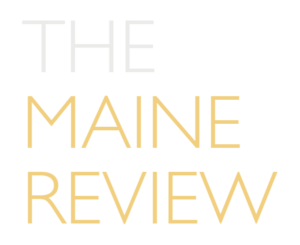We Want Your Writing.
Letter from the Editor
Dear Fellow Readers and Writers,
Following a year filled with disturbing events and casualties, I’m at a loss for words. Perhaps that is why I so often seek out the wise and skillful words of others. This January—days away from the inauguration of the United States’ 46th President—I keep thinking of Emily Dickinson’s words on hope:
PUT_CHARAC_“Hope” is the things with feathers –
PUT_CHARAC_That perches in the soul –
PUT_CHARAC_And sings the tune without the words –
PUT_CHARAC_And never stops – at all –
According to Cristanne Miller’s edition of Emily Dickinson’s Poems: As She Preserved Them, this poem was written circa early 1862 and collected in Dickinson’s hand-stitched Fascicle Thirteen.
1862, amid the American Civil War: what a strange year to feel hopeful. In April of that year, 13,000 Union soldiers and 11,000 Confederates killed each other at the Battle of Shiloh. In May, Union forces retreated across the Potomac River towards Washington D.C. The Battle of Seven Pines was a narrow victory for Union forces, followed by their defeat that August at the Second Battle of Bull Run. On September 17th, at Antietam, 2,108 Union soldiers were killed and 9,549 were wounded; 2,700 Confederates were killed and 9,029 were wounded. In December, Union forces were defeated in the Battle of Fredericksburg. For a woman in Amherst, Massachusetts, surely this would have seemed like a hopeless year?
Hope, however, is made all the more prominent by contrast. Hope is most remarkable when it is fledgling and facing dire odds. Or, as Dickinson put it, “sweetest – in the Gale – is heard” the promise of hope.
Through bouts of winter restlessness, sinking despair, and COVID ennui, I’ve also kept the words of the writers featured in Issue 7.1 close to me. “In the chilliest land,” I’ve heard the constant thrum of that thing with feathers in their words: in Ernest O. Ògúnyẹmí’s “Birdboy” there is hope, in Sajel Patel’s “Jay Shee Krishna, Jesus Christ” there is strength, and in Lauren Suzanne’s “Tennessee” there is remarkable endurance. When reading the words of Florina Nastase, Kennia Lopez, Hanna Bahedry, Maia Elsner, Aaron Brame, Brendan Egan, Tim Fab-Eme, Clinnesha Sibley, Michael Todd Cohen, and all the other writers featured in Issue 7.1, I feel that even in our despairing—or maybe especially then—the artist’s need to create is a sustaining, hopeful force.
We at The Maine Review wish you good health and happiness in 2021 and beyond.
Warm Regards,
Rosanna Gargiulo, Editor
Have questions? We have answers.
Contact us at info@mainereview.com.
Media requests, please contact media@mainereview.com.

